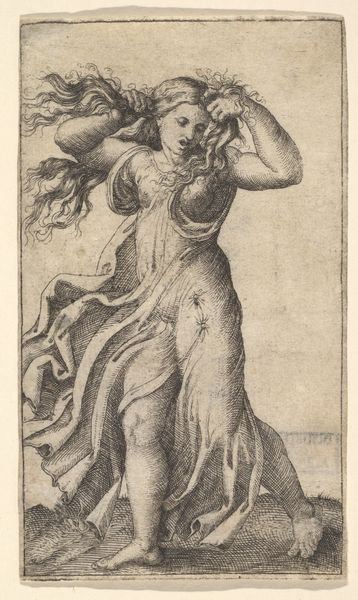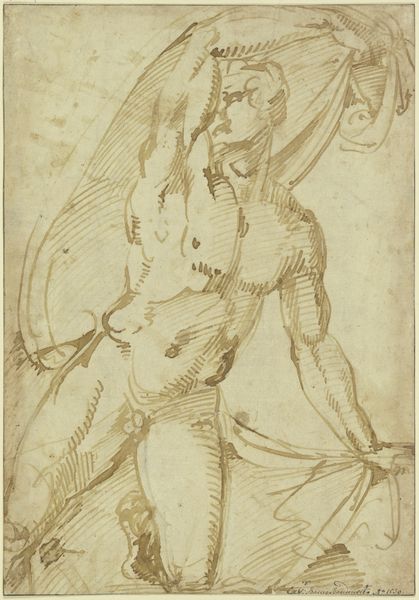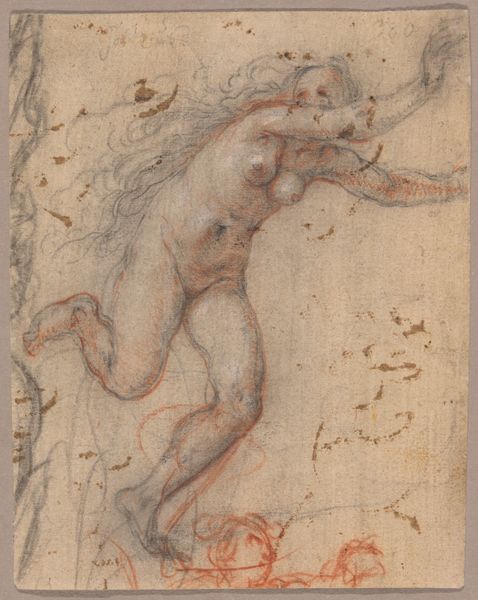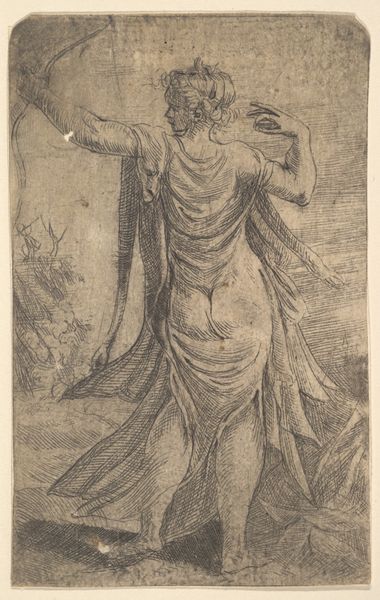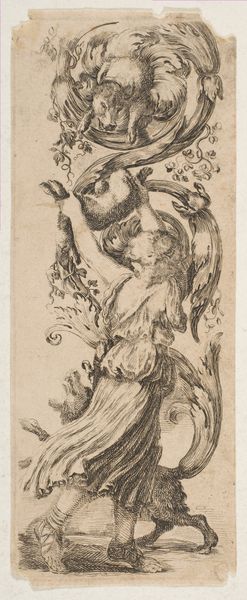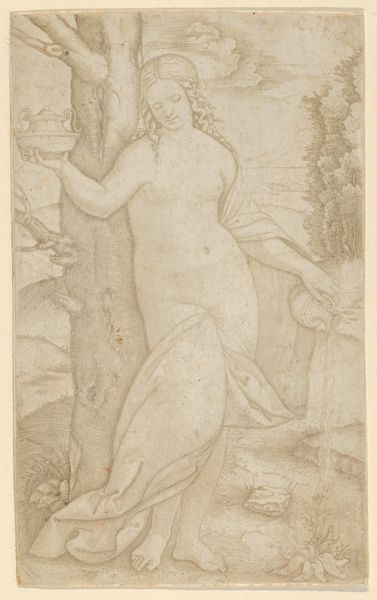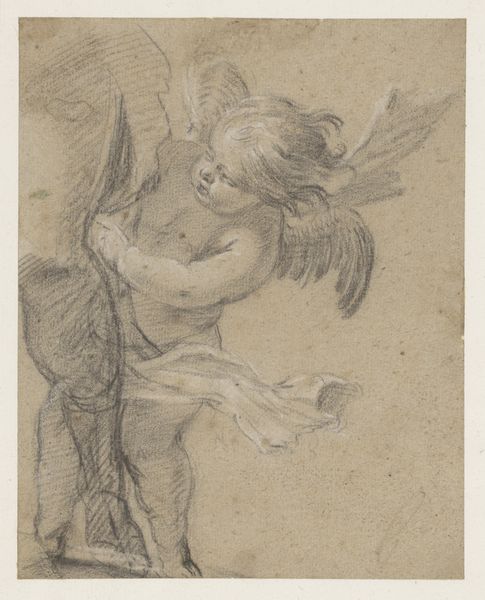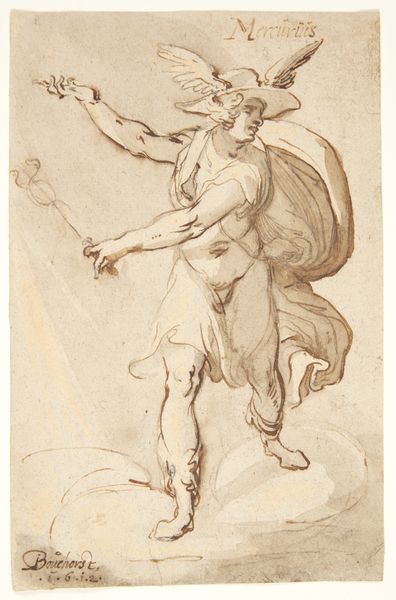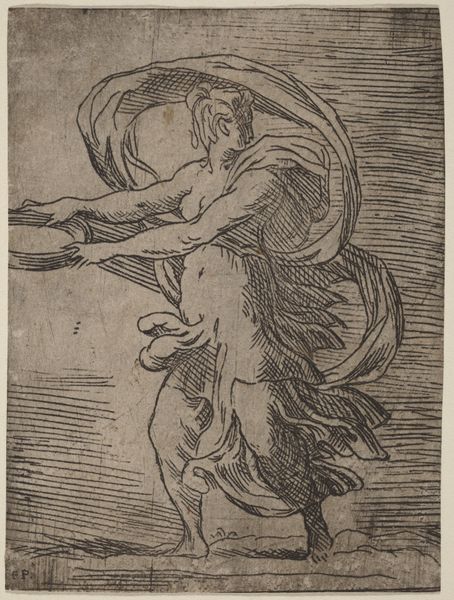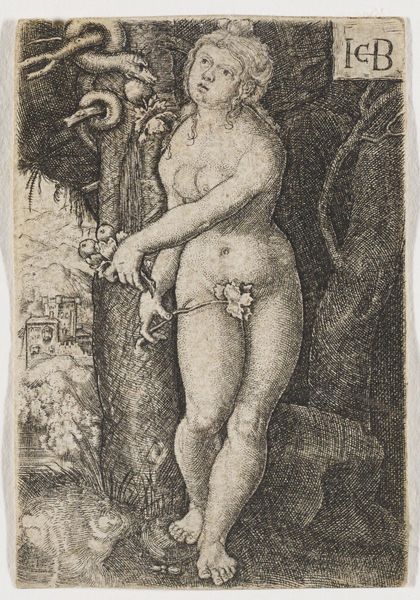
Mercury standing holding a cadecus in his right hand, a lyre in his left 1531 - 1541
0:00
0:00
drawing, print, engraving
#
drawing
#
ink painting
# print
#
figuration
#
italian-renaissance
#
nude
#
engraving
Dimensions: sheet: 6 11/16 x 3 9/16 in. (17 x 9 cm)
Copyright: Public Domain
Curator: This engraving from the Italian Renaissance depicts Mercury, messenger of the gods. Andrea Schiavone likely created this piece between 1531 and 1541. It shows him nude, holding his attributes—the caduceus, or staff, in his right hand and a lyre in his left. What strikes you most about this work? Editor: There's a haunting quality to this piece, something almost ethereal in the figure’s pose and the hazy lines. Mercury looks melancholic, and I'm drawn to how Schiavone renders the scene—the dense foliage, the resting goat—using only a delicate network of etched lines. Curator: The goat is a significant addition; Mercury was often associated with pastoral scenes and music, even as messenger. The Italian Renaissance embraced humanist ideals, and antiquity supplied new symbols. How does it play here, juxtaposed against that potent, classically male nudes? Editor: The nude figure of Mercury in the engraving speaks to more than just Renaissance fascination with classical forms. Consider the role gender plays within social hierarchies in representing power; Schiavone deliberately references these symbols and invites critical contemplation of social orders throughout European culture, which were perpetuated by works like this piece for years to come. Curator: The caduceus symbolizes trade and negotiation. The lyre signifies art and eloquence. Considering those things along with how he is presented as mostly nude and infantile I find it striking how that juxtaposition might invite considering other marginalized members of the population as both sexualized and infantile and perhaps intellectually inferior, when viewed through a lens that connects it to intersectional narratives about identity, gender, race and political power dynamics. Editor: Exactly! Schiavone layers meanings within culturally understood symbols. The haziness also underscores it with dreamlike ambiguity and opens itself to our various understandings even today. How, perhaps, visual elements retain echoes that outlast the original intents and context. Curator: Agreed! Seeing those connections invites dialogue on contemporary experiences through this and invites us to challenge inherent assumptions within these frameworks. Editor: It does. It challenges and engages—exactly why artwork should continue sparking important, maybe difficult, conversation centuries after its creation.
Comments
No comments
Be the first to comment and join the conversation on the ultimate creative platform.

